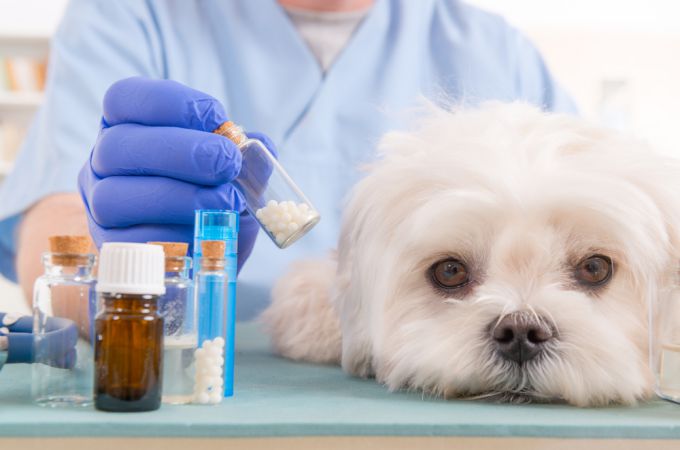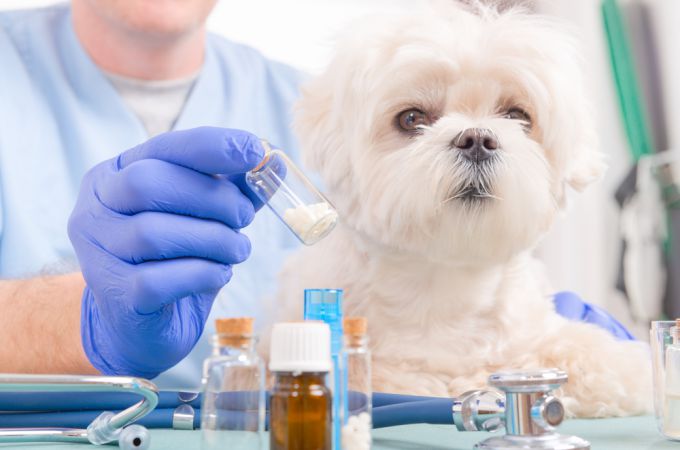Adopting a Maltese puppy is a life-changing moment for a dog lover. When a person or family owns a puppy, they have a responsibility to keep it healthy now that the puppy is a household member. One of the things to take care of a puppy or dog Maltese is to prevent the animal’s health problems.
A Maltese temperament is often affected by its health. Maltese puppies are indeed hardy and healthy animals, but genetics, neglect, or both a Maltese will have health troubles.
Identifying a health problem is important since it leads to ways on how to prevent such a problem. Just remember that it is not a sure thing for a particular health problem or disease to affect your pet.
MUST-READ: What You Need to Know About Teacup Maltese?
Here is a list of health concerns found in a Maltese puppy and along with it are means of prevention:
1. Patellar Luxation
This problem happens when a puppy or dog Maltese’s kneecaps don’t stay in its position in the puppy’s leg. The puppy’s femur or upper limb has a shallow groove that causes the kneecaps to fit in that place.
If left untreated, the puppy will drag its legs when walking, limping noticeably, arthritis, or cry out due to the problem’s pain. Patellar Luxation will either develop into a mild or severe case. It is a sad thing to see Maltese puppies suffer from this problem.
2. Portosystemic Shunt
Some Maltese puppies are born with a malformation in their blood vessels, causing the blood to bypass the liver. This condition is called Portosystemic Shunt. The blood feeds the liver and is cleansed of its toxins when passing through the liver. When blood goes through or around the liver without doing the functions mentioned above, the toxins spread throughout the Maltese body.
Symptoms are abnormal after-meal behavior, episodes of blindness, seizures, stunted growth, poor weight gain and excessive sleeping.
Prevention: Portosystemic Shunt is a hereditary disease and the only to stop it is to prevent the Maltese puppy, its siblings, and parents from breeding. Fortunately, Portosystemic Shunt is treatable by veterinarians.
3. White Dog Shaker Syndrome
A curious disease, as its name indicates, since this health disease is found only in pure white dogs besides the Maltese. However, the recent decade has seen the White Dog Shaker Syndrome affect non-white colored dogs. It remains to be seen if this disease will be renamed “Dog Shaker Syndrome” instead of “White Dog Shaker Syndrome” should the number of affected non-white colored toy dogs continue to rise.
MUST-READ: HOW TO STOP DOG FROM DIGGING?
The syndrome manifests itself as a tremor in the puppy’s body when your pet is six months to 3 years old. At first, the tremors can be mild, but over time it will become severe. Once it becomes severe any action like walking, sitting, etc. will be difficult. In fact, some actions may intensify the tremors if only temporarily.
MUST-READ: Popular Maltese Mixes
4. Dental Problems
Some people think that a Maltese puppy or dog does not need to brush its teeth. They believe that it’s part of the Maltese temperament that their teeth are self-cleaning. Unfortunately, all these premises are wrong and will cost the puppy or dog its teeth.
The accumulation of tartar and plaque along with gum line, deep gum disease, loose teeth, root exposure and severe pain are mild symptoms of the puppy’s dental problems. However when things like the yellow crust on its teeth, bumps, sores, gums bleeding and trouble with chewing along with eating shows up your puppy’s dental problem have become severe. In some cases, death happens due to infections.
Prevention: Preventing mild dental problems is easy. However, you may need to get your puppy or dog Maltese used to the idea and feeling of having its tooth brushed by you. Your job in regards to making the puppy or dog get used to tooth brushing is easier if your pet is younger. Thorough and good teeth brushing being done on a regular or scheduled basis will prevent mild dental problems. You can also arrange visits to a vet for a check-up since it is still needed. If the dental problem becomes severe, you will need to take your pet to a vet as well.
5. Collapsed Trachea
Rings of cartilage hold the Maltese’s neck together. From the inside of your pet’s neck and from the bottom to the top of the neck, those rings of cartilage surround the puppy’s neck. As long as the cartilages are intact, your Maltese have no problem breathing and eating. Unfortunately, those cartilages collapse sometimes. Make sure to read our guide about Maltese poodle mix
When a Maltese’s neck suffers too much stress the collapse of the cartilages occurs. Those cartilages break inwards into the puppy’s body and in some cases, they break apart. Once this breaking happens, Maltese puppies will experience moderate to severe breathing ain, pro, thing, and difficulty swallowing food.
Prevention: While the Collapsed Trachea is a hard problem the preventive action to stop a Collapsed Trachea is simple enough for a dog owner to do. The solution here is to use a dog harness instead of a dog collar. A dog harness reduces the stress on the puppy’s cartilages by distributing the neck’s weight neck to areas like the back and shoulder.
With a dog harness, your pet can jump, run play, etc. to its heart’s content without you worrying about the stress those activities do on the puppy’s neck. As for the dog, the collar doesn’t discard it just yet. Use the collar in tandem with the harness. The reason why your pet still needs its collar is to identify your pet. You can also get some stylish-looking harness for your pet.
Despite your best efforts, the various health problems will often to your pet. When that occurs to your Maltese puppy, do not hesitate to take your pet to a veterinarian to have those concerns treated.
As the old saying goes: Prevention is better than a cure. So be diligent in taking care of your puppy and be always alert to the condition of your pet’s health. Remember that a healthy puppy Maltese is an excellent pet who is still active, lovable and loyal.
MORE ADORABLE DOG BREEDS



Great post. Every puppy owner and pet lover must read this post. What do you think if it is need to meet a professional puppy health care service? I can’t decide about this.
Lots of useful information, thank you for the post! Found the videos very useful too. A must-read for all dog owners.
Love your ideas! Thanks for tips:)
useful information, thank you for the post
Great article thank you for sharing your knowledge 🙂 Hopefully this should help lots of maltese owners 🙂